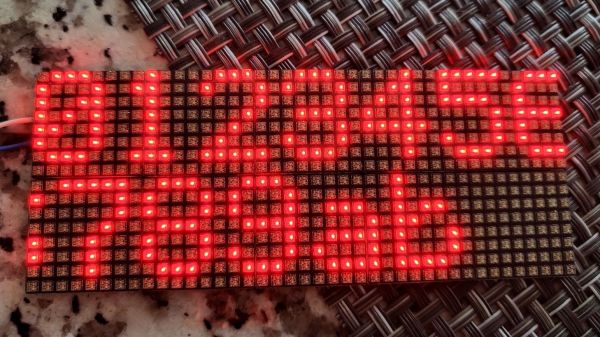LEDs are getting smaller and smaller, and the newest generations of indexable RGB LEDs are even fiddlier to use than their already diminutive predecessors. [Alex Lorman] has written some notes about the minuscule SK6805-EC10 series of LEDs, which may be helpful to those wanting to learn how to deal with these in a more controlled manner.
Most hardware types will be very familiar with the 5050-sized devices, sold as Neopixels in some circles, which are so-named due to being physically 5.0 mm x 5.0 mm in the horizontal dimensions. Many LEDs are specified by this simple width by depth manner. As for addressable RGB LEDs (although not all addressable LEDs are RGB, there are many weird and wonderful combinations out there!) the next most common standard size down the scale is the 2020, also known as the ‘Dotstar.’ These are small enough to present a real soldering challenge, and getting a good placement result needs some real skills.
[Alex] wanted to use the even smaller EC10 or 1111 devices, which measure a staggering 1.1 mm x 1.1 mm! Adafruit’s product page mentions that these are not intended for hand soldering, but we bet you want to try! Anyway, [Alex] has created a KiCAD footprint and a handy test PCB for characterizing and getting used to handling these little suckers, which may help someone on their way. They note that hot air reflow soldering needs low temperature paste (this scribe recommends using MG Chemicals branded T3 Sn42Bi57Ag1 paste in this application) and a very low heat to avoid cracking the cases open. Also, a low air flow rate to prevent blowing them all over the desk would also be smart. Perhaps these are more suited to hot plate or a proper convection oven?
As a bonus, [Alex] has previously worked with the slightly larger SK6805-1515 device, with some good extra notes around an interesting nonlinearity effect and the required gamma correction to get good colour perception. We’ll leave that to you readers to dig into. Happy soldering!
We’ve not yet seen many projects using these 1111 LEDs, but here’s one we dug up using the larger 1515 unit.












